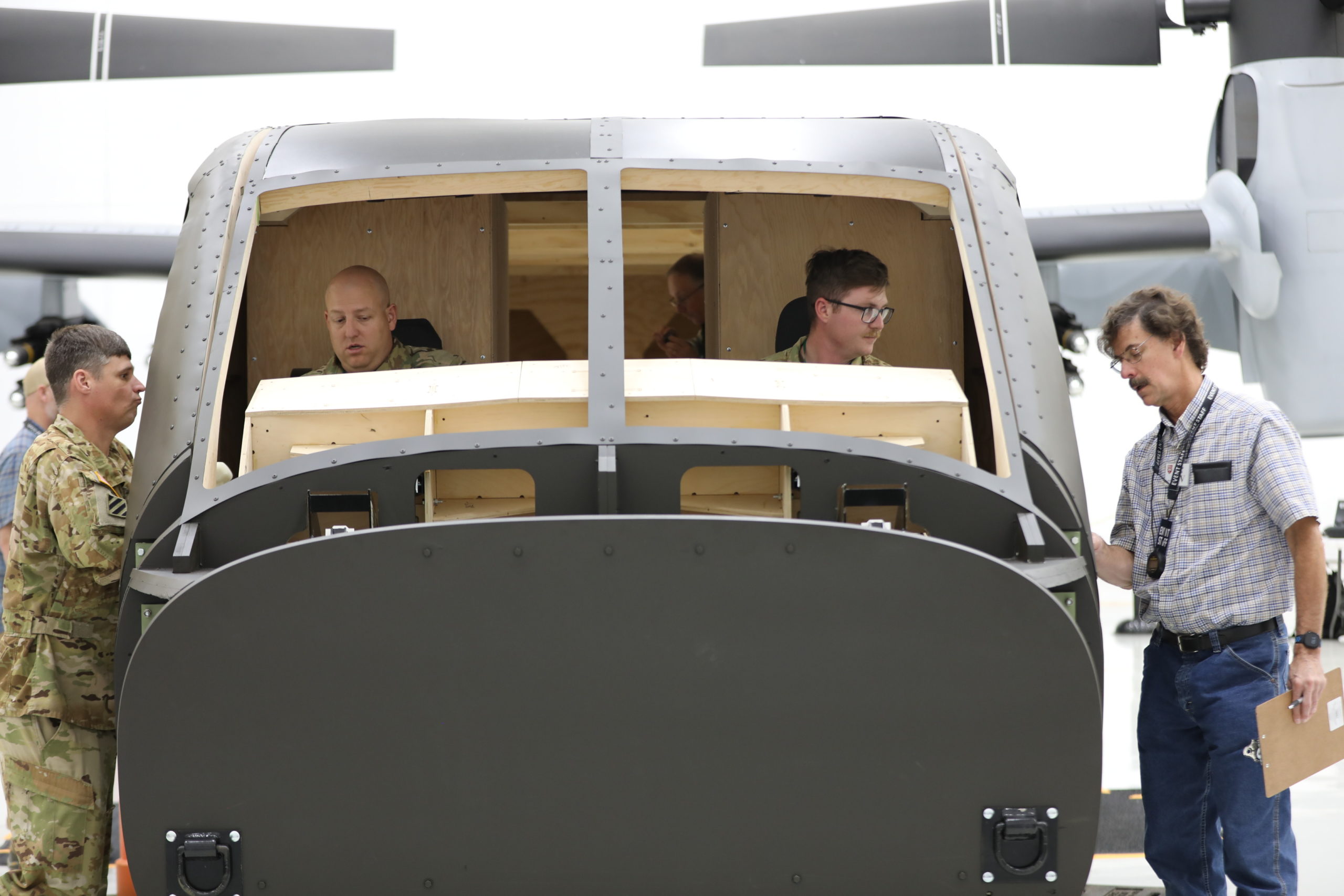The FLRAA Decision
In light of some high-profile mishaps in recent months involving the V-22 Osprey, a tiltrotor aircraft, I’ve seen questions raised as to why the U.S. Army is going with a tiltrotor aircraft for its Future Long-Range Assault Aircraft (FLRAA).
It’s quite simple: Tiltrotor aircraft – which land vertically like a helicopter and fly horizontally like a plane – deliver a level of capability that is simply unmatched. Once you understand those capabilities, it’s obvious why the Army made the decision to choose a tiltrotor over a coaxial helicopter for the FLRAA program.
A Quantum Leap in Range and Speed
In the FLRAA competition, the Bell V-280 Valor tiltrotor demonstrator, just as in the V-22, demonstrated superior range and speed as compared to traditional rotorcraft, including the coaxial helicopter design it beat.
A tiltrotor is used for vertical lift and then completely transitioned to providing forward flight thrust at high-speed cruise while using a wing for lift.
In the compound helicopter design of its competitor, lift at high speeds is still provided by the rotors while thrust is provided by a pusher propellor. The result is greater energy requirements in cruise, resulting in less range than the tiltrotor concept.
The range parameter was determinative for the Army, so much so that “long range” is in the name of the program. This makes perfect sense in light of potential operations in the Indo-Pacific, characterized by vast distances and distributed forces.
And when it comes to speed, while the competitor design afforded greater speeds than legacy rotorcraft, the design still offered limited top-end speed compared to the axially oriented proprotors of a tiltrotor.
The FLRAA tiltrotor will have greater range and speed capability from the start of the program and will have potential for growing those capabilities in the future.
An Emphasis on Assault
The assault mission, in essence, is about putting troops and equipment on the ground. If an aircraft exhibits greater payload, speed, and range than a competitor, then these capabilities will map to more troops and equipment on the ground, farther, and faster.
A second aspect of the assault mission is the ability to maneuver in a contested landing zone. Here, the Bell test team demonstrated that the V-280 demonstrator met and exceeded the current aeronautical design standards for agility that the Army uses.
Incorporating Lessons Learned
One cannot ignore the high-profile accidents in the V-22 Osprey program, but we must keep in mind two important points. One, every lesson learned in the V-22 program has been thoroughly studied and has been adopted as we transition to the next generation of tiltrotor technology that the FLRAA aircraft represents. Two, when looking at safety records of a host of other aircraft, the V-22 safety record does not suffer by comparison.
There is no doubt that the revolutionary design of the tiltrotor involved a great amount of learning on the part of the government-contractor team, and those lessons have translated into more mature, safer designs.
In a recent study of accidents in fly-by-wire aircraft that I participated in, I took the time to evaluate tiltrotor accidents to identify trends that could help predict such issues for other evolving hybrid-lift VTOL aircraft. I found that there were generally four areas of cause: 1) balancing flight control in the hybrid-lift designs though a combination of pilot control and flight control design, 2) handling aerodynamic risks unique to the hybrid-lift design, 3) pilot error, and 4) material failure.
The first three causal categories represent the initial learning curve related to this revolutionary design, and through their identification and correction, the V-22 is a safer aircraft; the lessons learned directly benefit the design of the V-280. The last category, of material failure, represents a later phase in the development and employment of a revolutionary aircraft design, where lessons are continually learned as the fleet ages.
Just as we have addressed many of the issues in the first three categories through continued engineering, I am confident that this newer set of challenges are being addressed and translated effectively into the FLRAA design.
The Best-Value Choice
The life-cycle cost of military aircraft is an ephemeral thing, often growing dramatically greater than originally envisioned, especially when it involves nascent underlying technology. Unlike its competitor, the FLRAA tiltrotor has benefited from lessons learned over the last 30 years of operation, experience that helps de-risk the new generation aircraft from a cost perspective. That’s a pedigree the competitor just couldn’t muster.
From both an engineering and military perspective, the Army made the right call. The FLRAA tiltrotor offers far more value for the dollar than its rival by enabling huge leaps in capability for Army aviation.
Furthermore, tiltrotor aircraft will open a whole new set of options to Army commanders and will prompt a change to how they think about tactical challenges. The Army should be excited about the prospect of tiltrotor technology in the fleet, and the world of possibilities it opens.
This article was published by Real Clear Defense on April 2, 2023.
Featured Photo: During the Future Long Range Assault Aircraft (FLRAA) Soldier Touch Point (STP) aircraft crew members practiced entering and exiting the mockup cockpit and stowing equipment in a series of tests that added more equipment and tasks for each iteration. (photo credit: CPT William Derrick, 1ACB)
REDSTONE ARSENAL, AL
11.28.2023
Photo by David Hylton
Program Executive Office, Aviation

